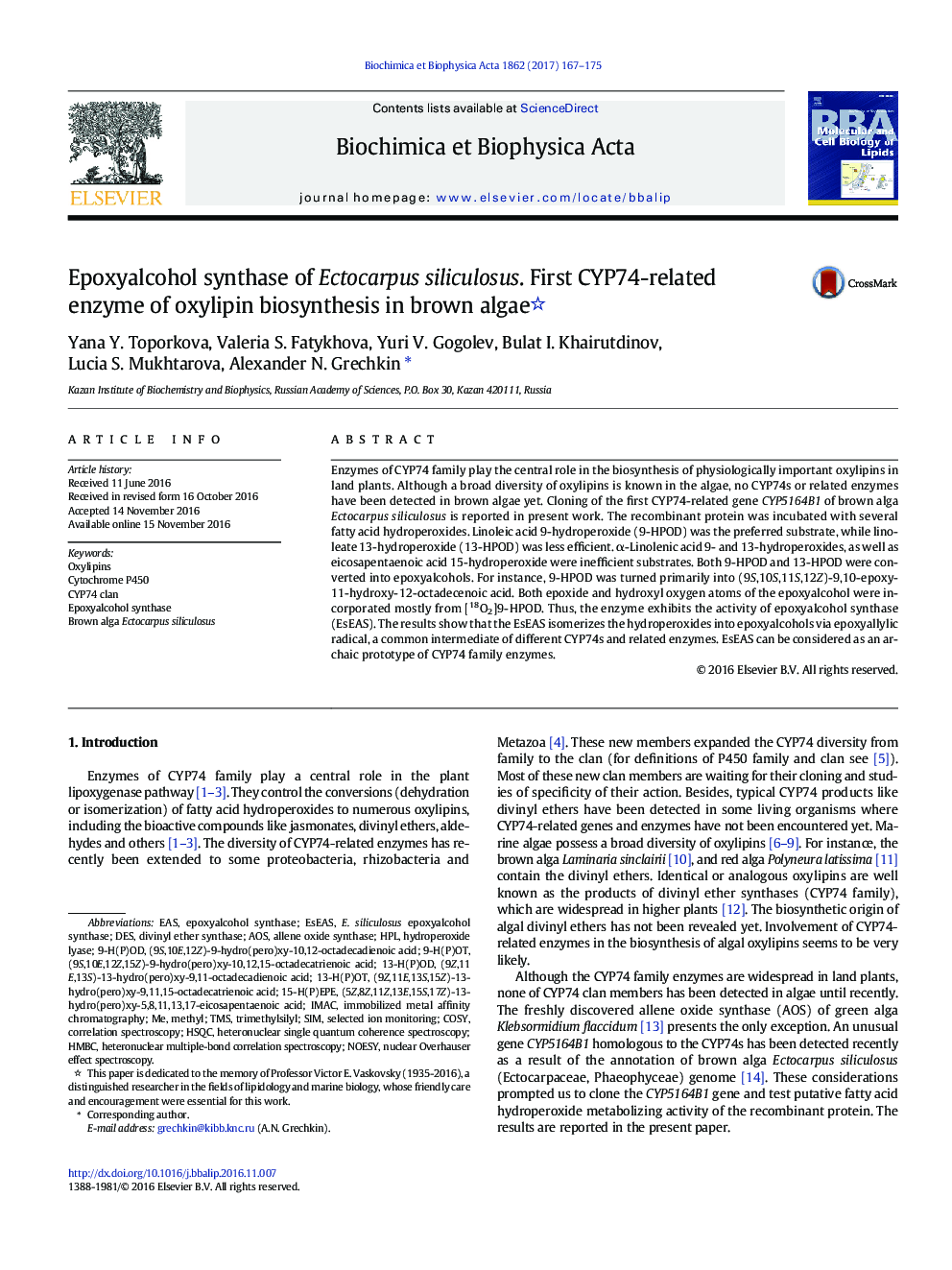| Article ID | Journal | Published Year | Pages | File Type |
|---|---|---|---|---|
| 5508486 | Biochimica et Biophysica Acta (BBA) - Molecular and Cell Biology of Lipids | 2017 | 9 Pages |
Abstract
Enzymes of CYP74 family play the central role in the biosynthesis of physiologically important oxylipins in land plants. Although a broad diversity of oxylipins is known in the algae, no CYP74s or related enzymes have been detected in brown algae yet. Cloning of the first CYP74-related gene CYP5164B1 of brown alga Ectocarpus siliculosus is reported in present work. The recombinant protein was incubated with several fatty acid hydroperoxides. Linoleic acid 9-hydroperoxide (9-HPOD) was the preferred substrate, while linoleate 13-hydroperoxide (13-HPOD) was less efficient. α-Linolenic acid 9- and 13-hydroperoxides, as well as eicosapentaenoic acid 15-hydroperoxide were inefficient substrates. Both 9-HPOD and 13-HPOD were converted into epoxyalcohols. For instance, 9-HPOD was turned primarily into (9S,10S,11S,12Z)-9,10-epoxy-11-hydroxy-12-octadecenoic acid. Both epoxide and hydroxyl oxygen atoms of the epoxyalcohol were incorporated mostly from [18O2]9-HPOD. Thus, the enzyme exhibits the activity of epoxyalcohol synthase (EsEAS). The results show that the EsEAS isomerizes the hydroperoxides into epoxyalcohols via epoxyallylic radical, a common intermediate of different CYP74s and related enzymes. EsEAS can be considered as an archaic prototype of CYP74 family enzymes.
Keywords
TMSOxylipins(9Z,11E,13S)-13-hydro(pero)xy-9,11-octadecadienoic acidHPLIMAC13-H(P)OD9-H(P)ODEASHSQCNOESYtrimethylsilyl(9S,10E,12Z)-9-hydro(pero)xy-10,12-octadecadienoic acidNuclear Overhauser Effect SpectroscopYDESAOSDivinyl ether synthaseEpoxyalcohol synthaseAllene oxide synthaseCytochrome P450SIMHeteronuclear single quantum coherence spectroscopycorrelation spectroscopyheteronuclear multiple-bond correlation spectroscopyMethylselected ion monitoringHMBC یا Heteronuclear Multiple Bond CorrelationHydroperoxide lyaseCOSYimmobilized metal affinity chromatography
Related Topics
Life Sciences
Biochemistry, Genetics and Molecular Biology
Biochemistry
Authors
Yana Y. Toporkova, Valeria S. Fatykhova, Yuri V. Gogolev, Bulat I. Khairutdinov, Lucia S. Mukhtarova, Alexander N. Grechkin,
